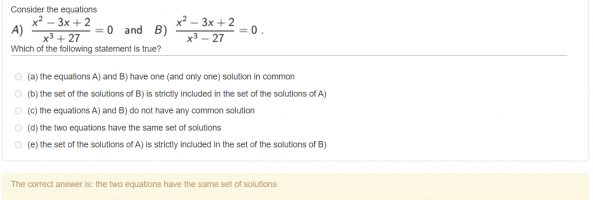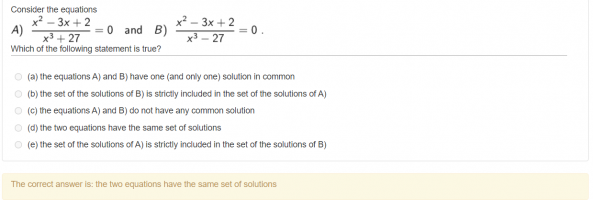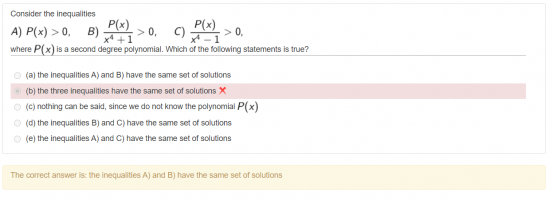Qwertyuiop[]
Junior Member
- Joined
- Jun 1, 2022
- Messages
- 123
Hi, I have 2 equations here and it's an mcq. In order to get the number of solutions of these two equations, I just multiplied both sides with the denominator to get rid of the fraction and then solved the quadratic. It's the same equation in the numerator so they have the same set of solutions. But is there another way to find the number of solutions of an equation without explicitly solving it ? What if you get an equation that is not easy to solve? What is the right way to answer these type of questions? Thanks 




